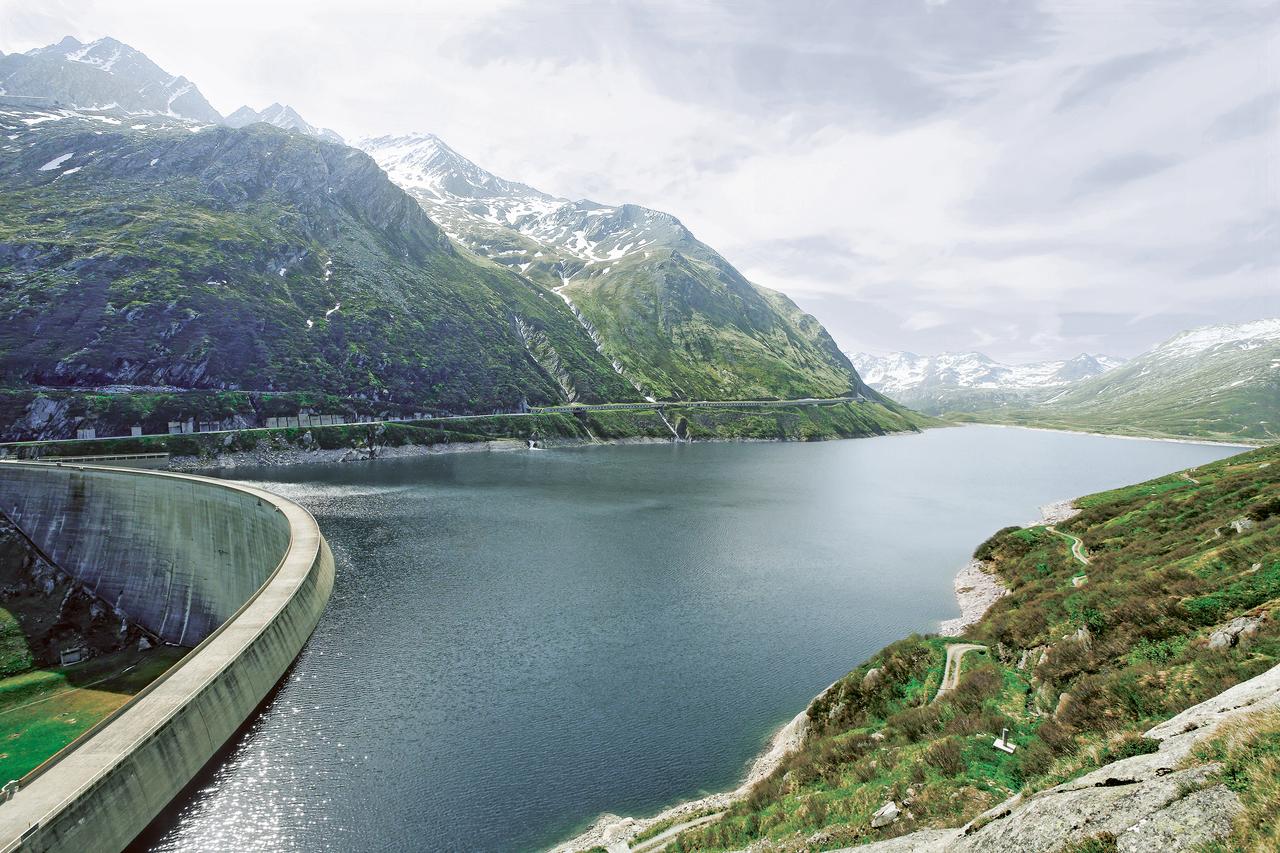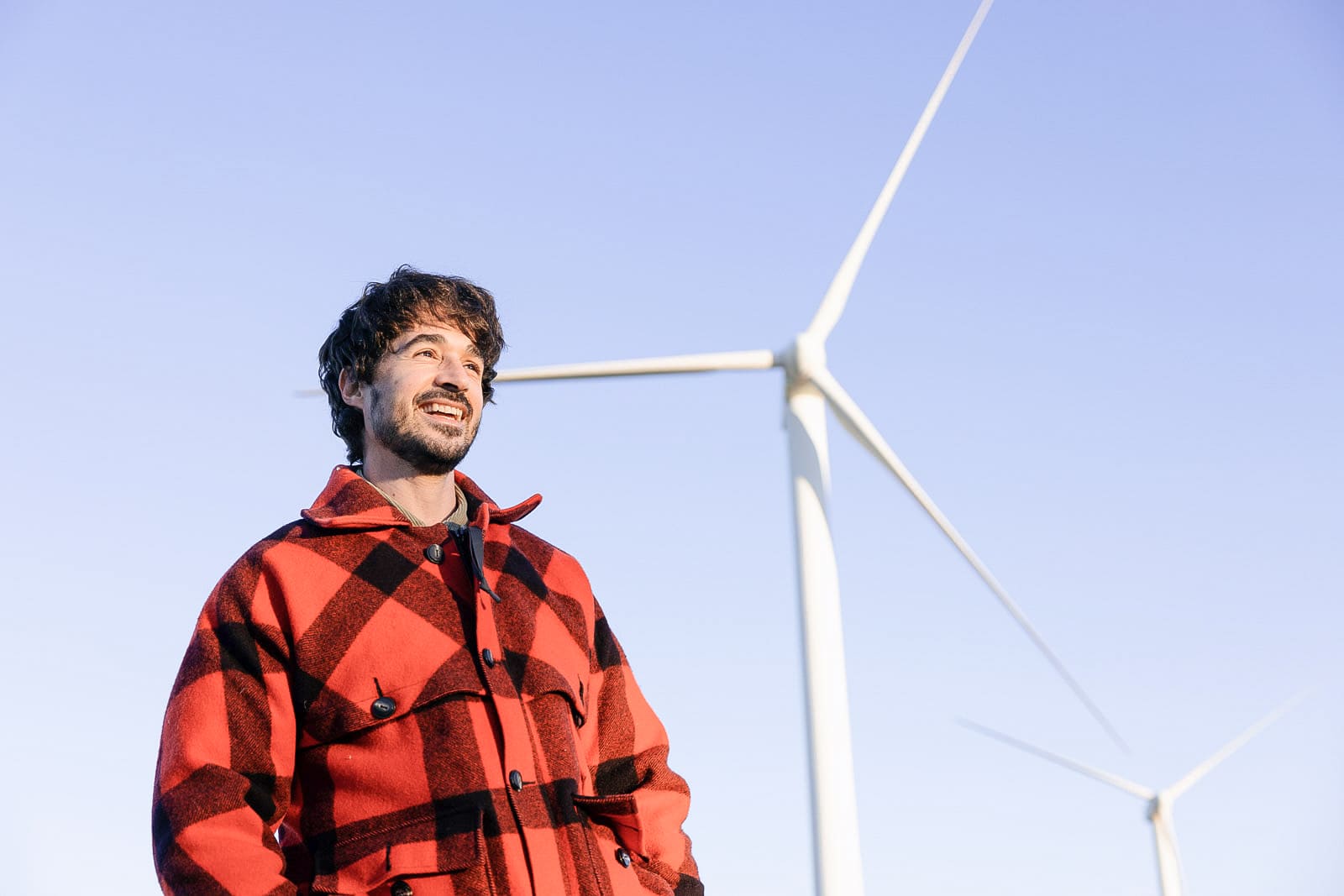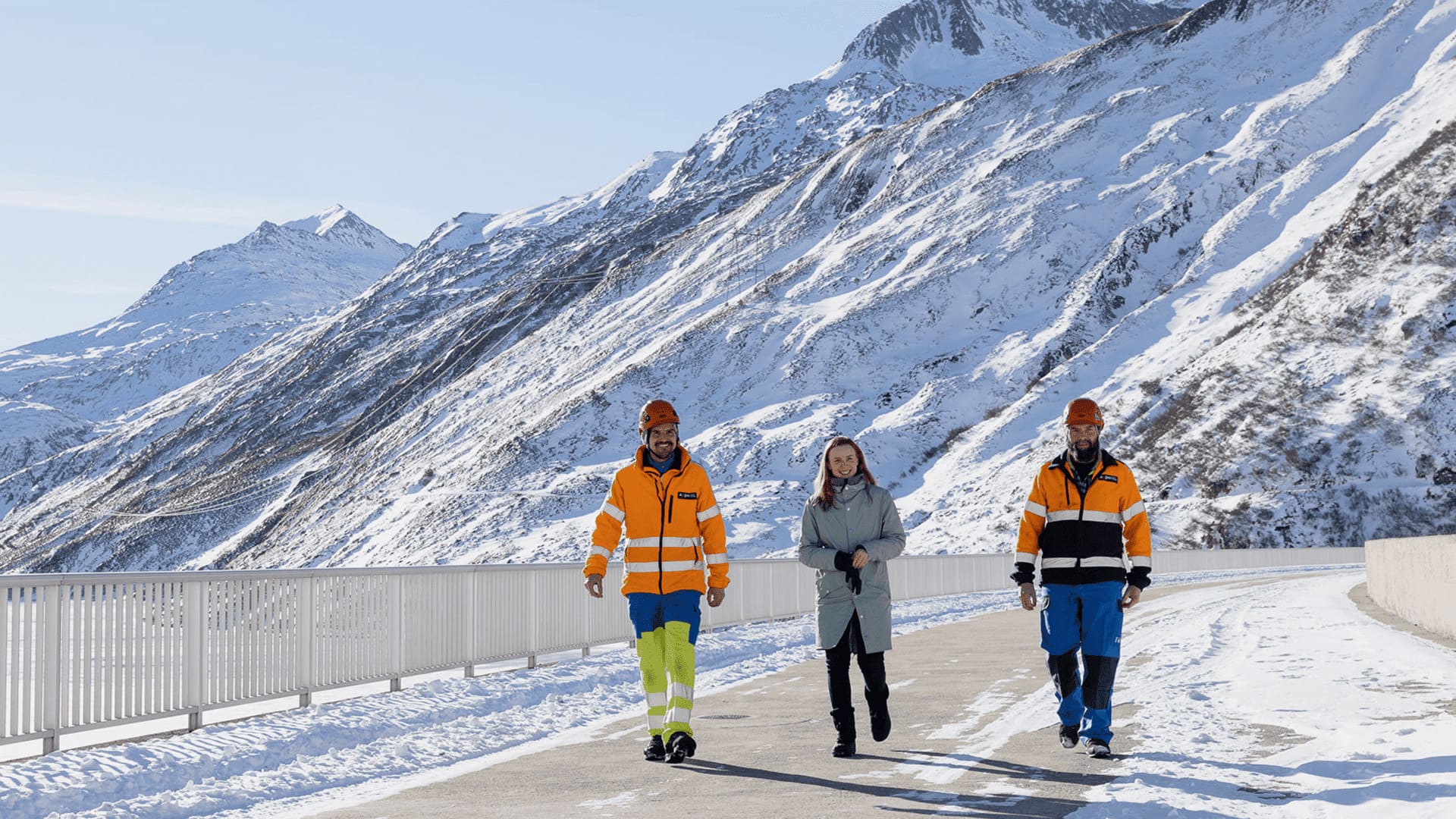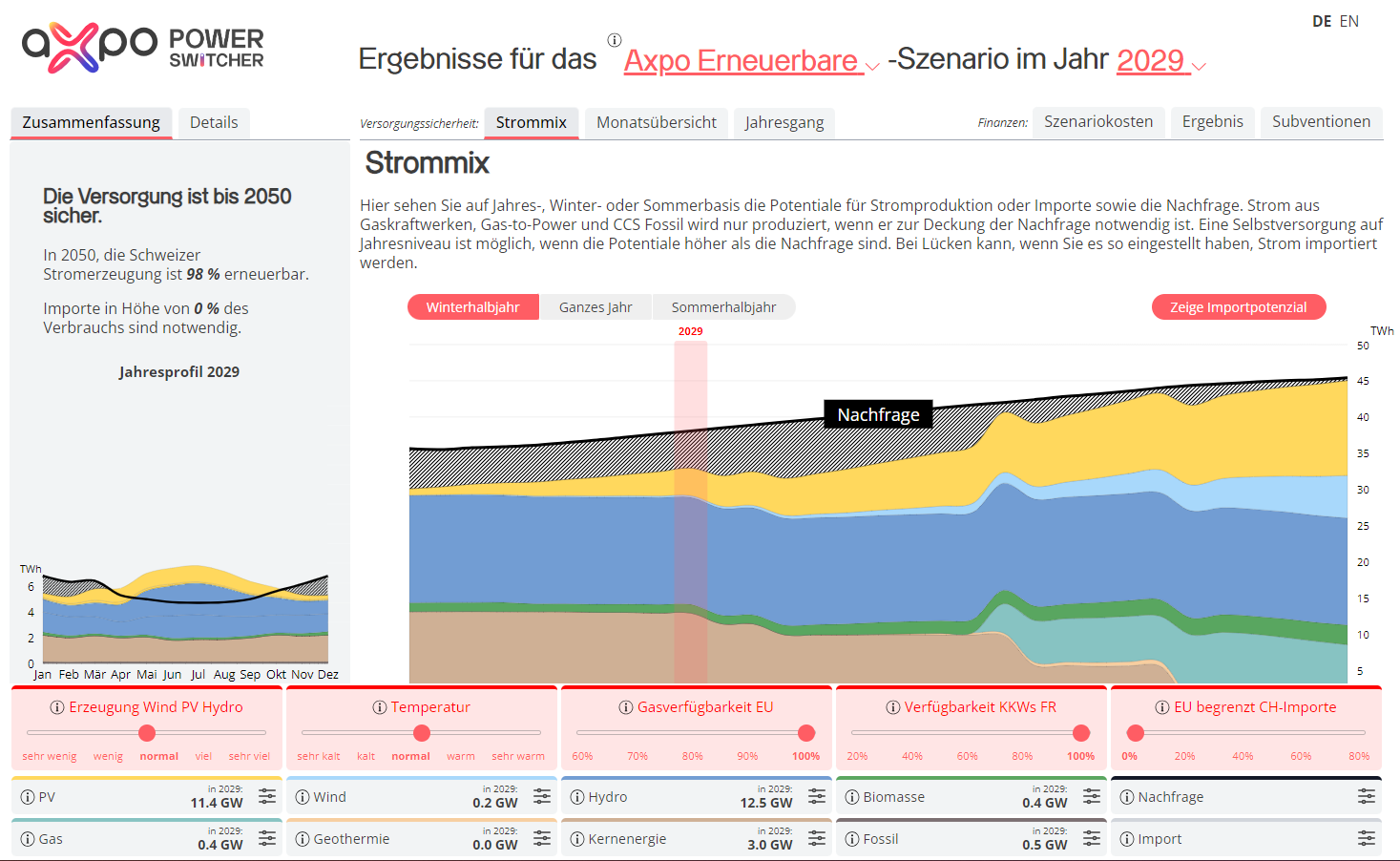08.09.2020 | Expansion potential of existing reservoirs in Switzerland
Higher dams for more winter power
In the future, Switzerland must produce more power from renewable energies. Particularly in winter, when our power consumption is at its highest. Power-to-X solutions –all of which are currently very expensive – and reservoirs could function as possible seasonal storage systems. A new study indicates: If the dam height is raised on 26 large reservoirs in Switzerland, nearly 3 TWh/a of additional summer electricity could be shifted to the winter.
Because of climate change and based on the Federal Energy Strategy 2050, Switzerland must focus even more strongly on renewable energies in the future. At the same time, the Swiss Federal Electricity Commission, which oversees security of supply, warns that with the energy strategy it is more and more apparent that there will be a greater power shortage in the winter half-year and stronger dependency on imports in Switzerland.
The gradual phase out of nuclear energy and the resulting elimination of Swiss nuclear power production in the amount of 24 TWh per year, 13 TWh/a during the winter, will further accentuate this problem.
As a result it is important to produce more power during the winter half-year, or to shift power to the winter. Reservoirs can function as this type of seasonal storage system. They are also much more efficient in comparison to power-to-X solutions. And there is development potential in Switzerland.
The situation today
Switzerland's reservoirs are already making a significant contribution to shifting power produced in summer to the winter. In other words, a shift to the season when about 57 percent (34 TWh) of Switzerland's annual power consumption of 60 TWh is needed. The Swiss reservoirs have a useful volume of about 3800 million m3.
The water level in reservoirs does not vary the same each year over the full height between filling and emptying targets. In practice reservoirs are not completely filled in order to accommodate additional water (rain, melt snow) and to produce power. As a rule, they are also not completely emptied in order to maintain a certain degree of production flexibility in the spring. On average, about 6.5 TWh of the total 8.8 TWh storage capacity – a little over 70 per cent – are used.
Study points out potential
In a recently published study by the Swiss Water Management Association, the energy-related potential in the expansion of existing reservoirs was investigated. The study systematically analysed the expansion options of the 38 reservoirs with a useful volume of at least 20 million m3 in the Swiss Alps. To raise the height of these dams by 5, 10 or 20 per cent, the study took into consideration the necessary adaptations to the storage basin, the dams and ancillary facilities, as well as the power plants, and assessed potential using eight criteria (details in the link at the end of the article).
The additional energy content of the enlarged storage systems was estimated for the options that were assessed as good or moderate. The result: Expanding 17 to 26 of the total 38 reservoirs examined would make it possible to shift 2.2 to 2.9 TWh of electricity per year from the summer to the winter half-year. According to the study: "Electricity production in the Swiss storage power plants could be increased from 48 to 59, and up to 62 per cent of annual production in the winter half-year.
The plus points of expansion
According to the study, the following aspects are favourable for upgrading existing reservoirs by raising dam heights:
- Since the volume in existing reservoirs is often much smaller than the yearly inflow volumes, raising the dam makes it possible to shift more energy to the winter.
- The supplementary, at times flooded area is relatively small in comparison to new reservoir construction. In the best case, primarily rock and gravel are affected, which could improve public acceptance of such projects.
- Owing to the typical structure of the valleys where Swiss reservoirs are located, the volume of reservoirs increases over-proportionally through an increase in dam height. A look back to the 1990s confirms this. The height of the Mauvoisin and Luzzone arch dams, in which Axpo holds interests, was increased. The dams were raised by 6, respectively 8 per cent – the storage volume increased by 17, respectively 23 per cent. The Barcuns dam at the Russein power plant, which is owned to 60 per cent by Axpo Hydro Surselva, was raised by 5 metres in 2015. As a result, reservoir volume increased from 115 000 m3 to 210 000 m3.
- Arch dams typically prevail among the larger reservoirs in Switzerland. They often have load reserves – making it possible to raise the height to a certain degree with a relatively small construction effort.
- Operators of existing reservoirs often have decades of experience on the behaviour of the dam, the underground and banks – and public acceptance is relatively high because the use of reservoirs, for example in the area of flooding protection, is appreciated.
Making investments possible
Almost 3 TWh/a could potentially be shifted from summer to winter by raising dam heights at 26 reservoirs. "That corresponds to one fourth of the winter power lacking from Swiss nuclear power plants and would make a relevant contribution to winter supply," says Roger Pfamatter, Director of the Swiss Water Management Association. And: "Whether reservoir enlargements will actually be implemented depends strongly on economic incentives."
See the entire study below from the magazine "Wasser Energie Luft" published by the Swiss Water Management Association (German only).
- Study from the magazine "Wasser Energie Luft" View Send email Download
Axpo with lots of hydropower
About 60 per cent of electricity in Switzerland is produced from hydropower. This amounts to an average of 36.5 TWh per year. Over 80 reservoirs and their power plants contribute about 47 per cent of this volume. As the largest producer of renewable energies, Axpo operates numerous storage power plants in Switzerland. They already supply important power during the winter.
Storage power plants have several advantages. Usually located in the Alps, they store water in reservoirs situated at higher altitudes. Taking advantage of the height difference and under high pressure, this water is released to turbines down in the valley in order to drive power generators. They can adjust their production to daily and yearly demand and produce valuable peak energy. Axpo holds interests in various storage power plants in Switzerland. You can see where these plants are located on the map.




.jpg)





